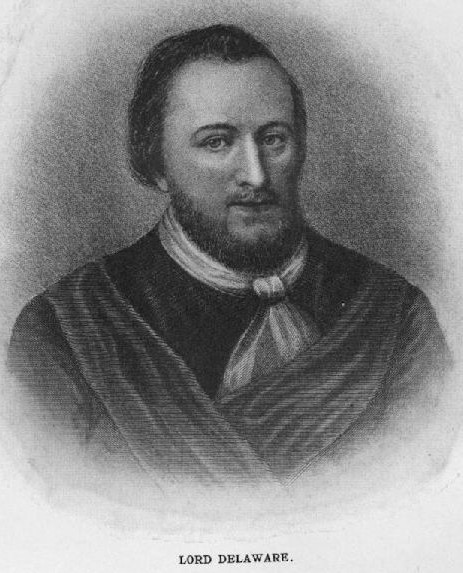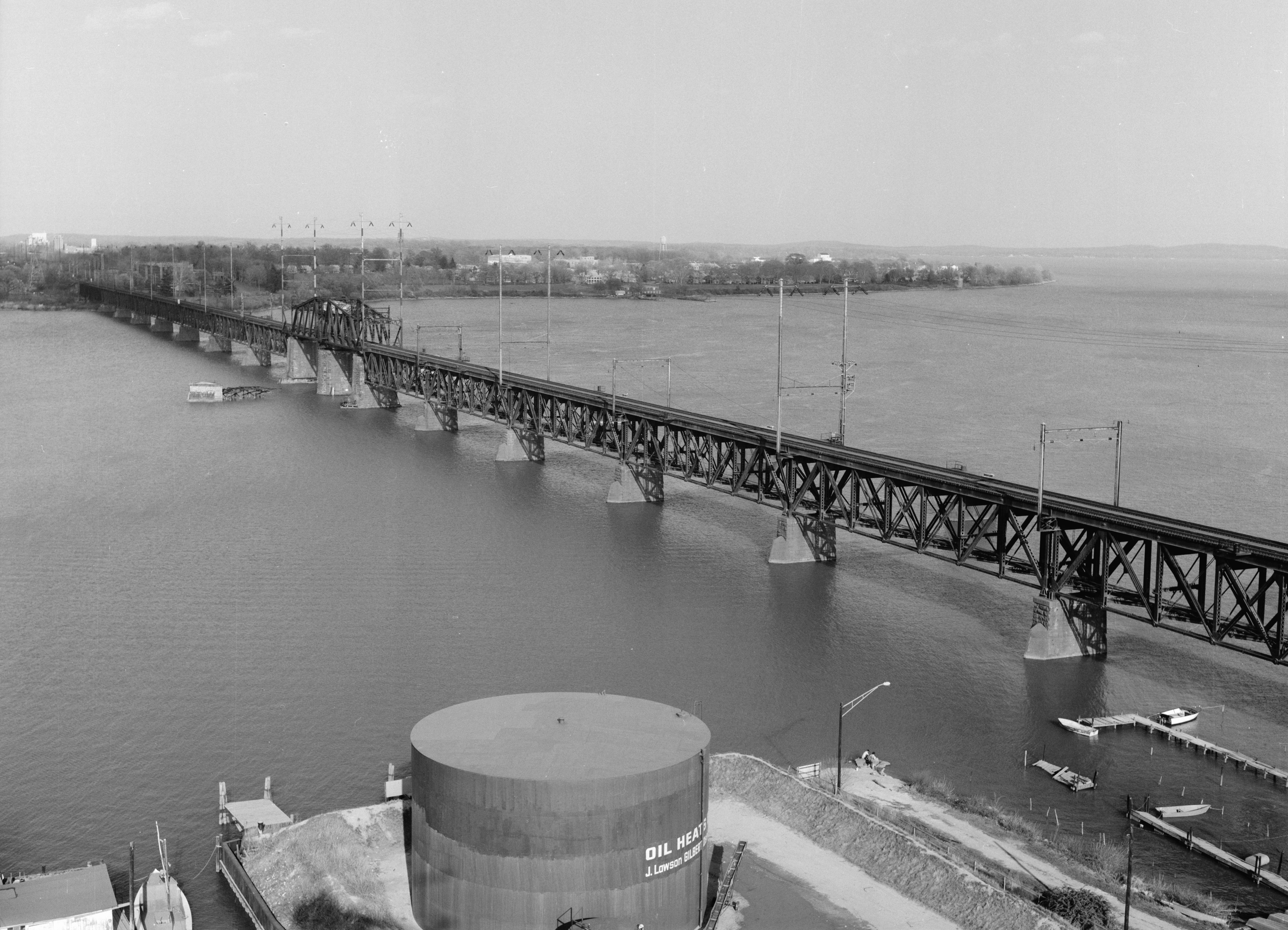|
Southwark Rail-Road
The Southwark Rail-Road was a small part of the Pennsylvania Railroad system in Philadelphia, Pennsylvania. History The Southwark Rail-Road was chartered on April 2, 1831. The company constructed tracks in 1835, along Broad Street from South Street to Washington Avenue, and along Washington Avenue from Broad Street to the Delaware River. At the intersection of Broad Street and Washington Avenue, the Philadelphia, Wilmington and Baltimore Railroad ended at the Southwark Rail-Road. The PW&B's passenger station was just west of Broad Street; the Southwark Rail-Road was intended for freight, and was leased to and operated by the PW&B. At the South Street end, the Philadelphia and Reading Railroad continued north on Broad Street. The tracks on Broad Street were removed in 1870. Around the same time, tracks were built along the riverfront from the yard at the river north to Almond Street (now Kenilworth Street), connecting it to the Pennsylvania Railroad's Delaware Extension. On March ... [...More Info...] [...Related Items...] OR: [Wikipedia] [Google] [Baidu] |
Pennsylvania Railroad
The Pennsylvania Railroad (reporting mark PRR), legal name The Pennsylvania Railroad Company also known as the "Pennsy", was an American Class I railroad that was established in 1846 and headquartered in Philadelphia, Pennsylvania. It was named for the commonwealth in which it was established. By 1882, Pennsylvania Railroad had become the largest railroad (by traffic and revenue), the largest transportation enterprise, and the largest corporation in the world. Its budget was second only to the U.S. government. Over the years, it acquired, merged with, or owned part of at least 800 other rail lines and companies. At the end of 1926, it operated of rail line;This mileage includes companies independently operated. PRR miles of all tracks, which includes first (or main), second, third, fourth, and sidings, totalled 28,040.49 at the end of 1926. in the 1920s, it carried nearly three times the traffic as other railroads of comparable length, such as the Union Pacific and Atchison, T ... [...More Info...] [...Related Items...] OR: [Wikipedia] [Google] [Baidu] |
Philadelphia, Pennsylvania
Philadelphia, often called Philly, is the largest city in the Commonwealth of Pennsylvania, the sixth-largest city in the U.S., the second-largest city in both the Northeast megalopolis and Mid-Atlantic regions after New York City. Since 1854, the city has been coextensive with Philadelphia County, the most populous county in Pennsylvania and the urban core of the Delaware Valley, the nation's seventh-largest and one of world's largest metropolitan regions, with 6.245 million residents . The city's population at the 2020 census was 1,603,797, and over 56 million people live within of Philadelphia. Philadelphia was founded in 1682 by William Penn, an English Quaker. The city served as capital of the Pennsylvania Colony during the British colonial era and went on to play a historic and vital role as the central meeting place for the nation's founding fathers whose plans and actions in Philadelphia ultimately inspired the American Revolution and the nation's inde ... [...More Info...] [...Related Items...] OR: [Wikipedia] [Google] [Baidu] |
Delaware River
The Delaware River is a major river in the Mid-Atlantic (United States), Mid-Atlantic region of the United States. From the meeting of its branches in Hancock (village), New York, Hancock, New York, the river flows for along the borders of New York (state), New York, Pennsylvania, New Jersey, and Delaware, before emptying into Delaware Bay. It is the longest free-flowing river in the Eastern United States. The river has been recognized by the National Wildlife Federation as one of the country's Great Waters. The river's drainage basin, watershed drains an area of and provides drinking water for 17 million people. The river has two branches that rise in the Catskill Mountains of New York: the West Branch Delaware River, West Branch at Mount Jefferson (New York), Mount Jefferson in Jefferson, New York, Jefferson, Schoharie County, New York, Schoharie County, and the East Branch Delaware River, East Branch at Grand Gorge, New York, Grand Gorge, Delaware County, New York, ... [...More Info...] [...Related Items...] OR: [Wikipedia] [Google] [Baidu] |
Philadelphia, Wilmington And Baltimore Railroad
The Philadelphia, Wilmington and Baltimore Railroad (PW&B) was an American railroad that operated independently from 1836 to 1881. It was formed in 1836 by the merger of four state-chartered railroads in three Middle Atlantic states to create a single line between Philadelphia and Baltimore. In 1881, the PW&B was purchased by the Pennsylvania Railroad (PRR), which was at the time the nation's largest railroad. In 1902, the PRR merged it into its Philadelphia, Baltimore and Washington Railroad. The right-of-way laid down by the PW&B line is still in use today as part of Amtrak's Northeast Corridor and the Maryland Department of Transportation's MARC commuter passenger system from Baltimore to Maryland's northeast corner. Freight is hauled on the route; formerly by the Conrail system and currently by Norfolk Southern. History Origins On April 2, 1831, the General Assembly of Pennsylvania, seeking to improve transportation between Philadelphia and points south along the Atlantic c ... [...More Info...] [...Related Items...] OR: [Wikipedia] [Google] [Baidu] |
Philadelphia And Reading Railroad
The Reading Company ( ) was a Philadelphia-headquartered railroad that provided passenger and commercial rail transport in eastern Pennsylvania and neighboring states that operated from 1924 until its 1976 acquisition by Conrail. Commonly called the Reading Railroad, and logotyped as Reading Lines, the Reading Company was a railroad holding company for the majority of its existence and was a single railroad during its later years. It operated service as Reading Railway System and was a successor to the Philadelphia and Reading Railway Company, founded in 1833. Until the decline in anthracite loadings in the Coal Region after World War II, it was one of the most prosperous corporations in the United States. Competition with the modern trucking industry that used the interstate highway system for short-distance transportation of goods, also known as short hauls, compounded the company's problems, forcing it into bankruptcy in 1971. Its railroad operations were merged into Conrail i ... [...More Info...] [...Related Items...] OR: [Wikipedia] [Google] [Baidu] |
Delaware Extension (PRR)
The Delaware Extension was a rail line owned and operated by the Pennsylvania Railroad in Philadelphia, Pennsylvania. The line ran from Arsenal Interlocking in West Philadelphia southeast, south, east and north to the intersection of Delaware Avenue (now Columbus Boulevard) and Dock Street. It met the West Philadelphia Elevated at Arsenal, crossed the Schuylkill River on the Arsenal Bridge, intersected with the Washington Avenue Branch, Girard Point Branch, Swanson Street Branch (twice), and Washington Avenue Branch again in South Philadelphia, and became the Delaware Avenue Branch at Dock Street.Pennsylvania RailroadForm CT1000, List of Stations and Sidings and Instructions for Making Reports to the Superintendent Car Service The line from Arsenal to Greenwich Yard on the Delaware River is now part of CSX Transportation's Harrisburg Subdivision. From Greenwich Yard north to Dock Street, the line is owned by the Philadelphia Belt Line Railroad and used by both CSX and the Norfolk ... [...More Info...] [...Related Items...] OR: [Wikipedia] [Google] [Baidu] |
Philadelphia, Baltimore And Washington Railroad
The Philadelphia, Baltimore and Washington Railroad (PB&W) was a railroad that operated in Pennsylvania, Delaware, Maryland, and the District of Columbia in the 20th century, and was a key component of the Pennsylvania Railroad (PRR) system. Its main line ran between Philadelphia and Washington. The PB&W main line is now part of the Northeast Corridor, owned by Amtrak. History The railroad was formed in 1902 when the Pennsylvania Railroad merged two of its southern subsidiaries, the Philadelphia, Wilmington and Baltimore Railroad and the Baltimore and Potomac Railroad. In 1907, the PB&W became a co-owner of the new Washington Terminal Company, which operated the new Washington Union Station, the marble structure dubbed the "Transportation Temple of America". In 1916, the PB&W operated of road, including of trackage rights. Acquisitions The PB&W acquired six railroad companies: * 1906: South Chester Railroad * 1913: Baltimore and Sparrow's Point Railroad, which provided freig ... [...More Info...] [...Related Items...] OR: [Wikipedia] [Google] [Baidu] |
Philadelphia, Wilmington And Baltimore Railroad Company
The Philadelphia, Wilmington and Baltimore Railroad (PW&B) was an American railroad that operated independently from 1836 to 1881. It was formed in 1836 by the merger of four state-chartered railroads in three Middle Atlantic states to create a single line between Philadelphia and Baltimore. In 1881, the PW&B was purchased by the Pennsylvania Railroad (PRR), which was at the time the nation's largest railroad. In 1902, the PRR merged it into its Philadelphia, Baltimore and Washington Railroad. The right-of-way laid down by the PW&B line is still in use today as part of Amtrak's Northeast Corridor and the Maryland Department of Transportation's MARC commuter passenger system from Baltimore to Maryland's northeast corner. Freight is hauled on the route; formerly by the Conrail system and currently by Norfolk Southern. History Origins On April 2, 1831, the General Assembly of Pennsylvania, seeking to improve transportation between Philadelphia and points south along the Atlantic ... [...More Info...] [...Related Items...] OR: [Wikipedia] [Google] [Baidu] |
Defunct Pennsylvania Railroads
{{Disambiguation ...
Defunct (no longer in use or active) may refer to: * ''Defunct'' (video game), 2014 * Zombie process or defunct process, in Unix-like operating systems See also * * :Former entities * End-of-life product * Obsolescence Obsolescence is the state of being which occurs when an object, service, or practice is no longer maintained or required even though it may still be in good working order. It usually happens when something that is more efficient or less risky r ... [...More Info...] [...Related Items...] OR: [Wikipedia] [Google] [Baidu] |
Companies Affiliated With The Philadelphia, Baltimore And Washington Railroad
A company, abbreviated as co., is a legal entity representing an association of people, whether natural, legal or a mixture of both, with a specific objective. Company members share a common purpose and unite to achieve specific, declared goals. Companies take various forms, such as: * voluntary associations, which may include nonprofit organizations * business entities, whose aim is generating profit * financial entities and banks * programs or educational institutions A company can be created as a legal person so that the company itself has limited liability as members perform or fail to discharge their duty according to the publicly declared incorporation, or published policy. When a company closes, it may need to be liquidated to avoid further legal obligations. Companies may associate and collectively register themselves as new companies; the resulting entities are often known as corporate groups. Meanings and definitions A company can be defined as an "artificial pers ... [...More Info...] [...Related Items...] OR: [Wikipedia] [Google] [Baidu] |
Railway Companies Established In 1831
Rail transport (also known as train transport) is a means of transport that transfers passengers and goods on wheeled vehicles running on rails, which are incorporated in Track (rail transport), tracks. In contrast to road transport, where the vehicles run on a prepared flat surface, rail vehicles (rolling stock) are directionally guided by the tracks on which they run. Tracks usually consist of steel rails, installed on Railroad tie, sleepers (ties) set in track ballast, ballast, on which the rolling stock, usually fitted with metal wheels, moves. Other variations are also possible, such as "slab track", in which the rails are fastened to a concrete foundation resting on a prepared subsurface. Rolling stock in a rail transport system generally encounters lower friction, frictional resistance than rubber-tyred road vehicles, so passenger and freight cars (carriages and wagons) can be coupled into longer trains. The rail transport operations, operation is carried out by a ... [...More Info...] [...Related Items...] OR: [Wikipedia] [Google] [Baidu] |






